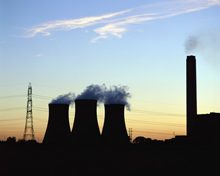Beta Comments on EPA’s Proposed Deferral of Biogenic CO2 Emissions
 ASTM D6866 lab Beta Analytic Inc. has submitted a public comment on the U.S. Environmental Protection Agency’s proposed rule for the deferral of carbon dioxide (CO2) emissions from bioenergy and other biogenic sources. The company is recommending to the EPA that stationary sources combusting mixed fuels use ASTM D6866 testing to accurately measure their biogenic CO2 emissions. With respect to alternative fuels, the company has pointed out that sewage sludge is not 100% biomass.
ASTM D6866 lab Beta Analytic Inc. has submitted a public comment on the U.S. Environmental Protection Agency’s proposed rule for the deferral of carbon dioxide (CO2) emissions from bioenergy and other biogenic sources. The company is recommending to the EPA that stationary sources combusting mixed fuels use ASTM D6866 testing to accurately measure their biogenic CO2 emissions. With respect to alternative fuels, the company has pointed out that sewage sludge is not 100% biomass.
The EPA has proposed to defer for three years the application of the prevention of significant deterioration (PSD) and Title V permitting requirements to biogenic CO2 emissions from bioenergy and other biogenic stationary sources. PSD requirements involve installation of the Best Available Control Technology (BACT) for the sources, among others. Title V permitting, aka “part 70 permits,” relates to Title V of the Clean Air Act.
Facilities affected by the proposed rule include electric utilities burning biomass fuel; manufacturers of wood products, wood pellet fuel, and pulp and paper; solid waste combustors and incinerators; sewage treatment facilities, solid waste landfills; ethanol manufacturers; and food/beverage processors burning agricultural biomass residues using fermentation processes or producing biogas from anaerobic digestion of waste materials.
The proposed rule was published in the US Federal Register on March 21, 2011. The 45-day public comment period closes on May 5.
Beta Analytic Public Comment
The EPA has requested comments whether the deferral should specify that stationary sources use a specific method for determining their biogenic CO2 emissions. The EPA has also sought comments on ways to ensure there is an accurate estimate of how much biogenic CO2 is subject to the deferral for a specific facility, particularly when combusting mixed fuels (Docket ID: EPA-HQ-OAR-2011-0083, Paragraph Citation 76 FR 15252).
Beta Analytic’s public comment:
Dear Sir/Madam:
We are recommending that stationary sources combusting mixed fuels use ASTM D6866 testing to accurately measure their biogenic CO2 emissions. This standard method is used to determine the exact percentage of biogenic CO2 emissions produced from combusting fuels that are partly fossil and partly biomass, e.g. municipal solid waste, used tires, and sewage sludge. ASTM D6866 has already been incorporated in the EPA’s Mandatory Greenhouse Gas Reporting Rule (40 CFR Part 98) and Western Climate Initiative’s Mandatory Reporting Requirements, among others.
We would also like to point out an oversight in the EPA GHG Reporting Rule concerning the biogenic CO2 emissions of stationary sources that combust sewage sludge as fuel. Based on our internal lab tests using ASTM D6866, sewage sludge/biosolids are only about 80% biogenic. Numerous researches have demonstrated that sewage sludge contains a significant amount of fossil carbon due to detergents, shampoos, and other petroleum-based consumer products that enter the waste stream. Two of these researches are:
J. McEvoy and W. Giger, Accumulation of linear alkylbenzenesulphonate surfactants in sewage sludges, Naturwissenschaften, Volume 72, Number 8 / August, 1985, 429-431
W Giger, PH Brunner, and C Schaffner, 4-Nonylphenol in sewage sludge: accumulation of toxic metabolites from nonionic surfactants, Science 10 August 1984, Vol. 225. no. 4662, pp. 623 – 625
We hope the EPA will take into account the fossil inputs in materials assumed to be 100% biomass or renewable, e.g. sewage sludge and demolition wood (with petroleum-based paint or adhesives).
Sincerely,
Thierry Tamers
Director
Beta Analytic Inc.
4985 SW 74 Court
Miami, FL 33155
Tel: (1) 305-662-7760
Email: info@betalabservices.com
Source: Beta Analytic comment filed in www.regulations.gov
This entry was posted on Wednesday, May 4th, 2011 and is filed under Beta Analytic Updates, Biobased Regulations, Renewable Carbon, Waste-to-Energy .